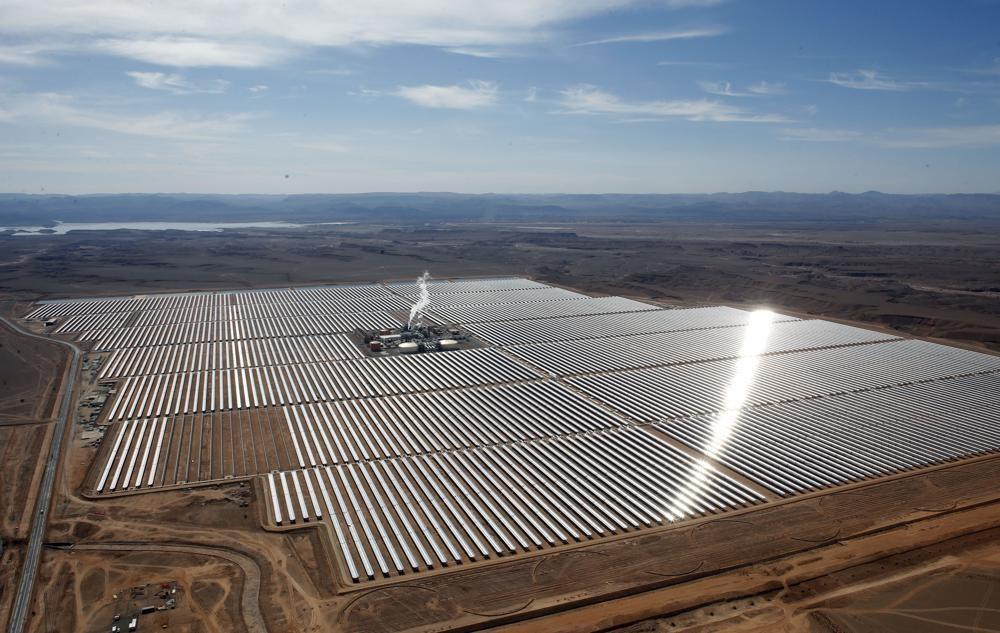
From wind farms across the African coastline to geothermal projects in the east African rift valley, a new United Nations climate report on April 4 brought the continent’s vast clean energy potential into the spotlight.
The U.N.’s Intergovernmental Panel for Climate Change report comes at a time when Africa’s renewable energy business is already booming. Many African nations are intensifying efforts to embrace alternative renewable energy pathways and shift away from fossil fuel dependency, with countries such as Kenya, Tanzania, Morocco, Egypt, Ethiopia and South Africa taking the lead on large-scale clean energy adoption.
Yet Africa has attracted just 2 percent - $60 billion - of the $2.8 trillion invested in renewables worldwide in the last two decades and accounts for only 3 percent of the world’s current renewable energy capacity, the Associated Press quoted the report as saying.
Limiting warming to 1.5 degrees Celsius or 2C, in line with the 2016 Paris climate agreement, will involve even greater energy system transformation, the U.N. report said.
That means more renewable energy intiatives, such as Kenya’s Lake Turkana Wind Power, launched in 2019 some 600 kilometers northwest of the capital Nairobi and making up 18 percent of the country’s energy production, are needed. Its CEO, Phylip Leferink, said large projects like these can be replicated, but it remains logistically challenging.
“The wind conditions in the north of Kenya are rather unique for the continent. You will be hard-pressed to find another location in Africa with a similar wind regime,” Leferink said. “This however does not mean that there is no potential for other wind projects in Africa; there most certainly is. Especially the African coastline, from Djibouti all the way south around South Africa and up north again up to Cameroon, has good wind potential and certainly warrants initiatives in this regard.”
The project is already in good company, with off-grid solar power also contributing to the country’s energy production. In Nakuru county, some 167 km northwest of Nairobi, James Kariuki signed up for M-Kopa solar power, a pay-as-you-go low-cost financing for off-grid solar power to his home.
“When I installed solar power into my home, I ended up making considerable savings from the use of kerosene lamp for lighting and charcoal in my house,” Kariuki said. “Hospital bills for my family have since gone down and we now have internet and watch international sports in my home.”
Since 2012, M-Kopa has powered over 225,000 homes in Kenya, Uganda and Tanzania with off-grid solar power. Kenya has also been expanding its geothermal and bioenergy capacity for several years.
These initiatives are a firm step in the right direction, according to report author and energy expert Yamina Saheb.
“Renewable energy sources are definitely an important mitigation strategy for Africa, offering its citizens decent living standards by developing infrastructure and buildings that do not require carbon intensive solutions,” Saheb told the Associated Press. “The whole continent could go solar including PV (photovoltaic) and thermal solar and some countries could also go for wind.”
Solar energy initiatives such as the Noor Ouarzazate complex in Morocco, Benban solar park in Egypt and South Africa’s Redstone solar park have sprung up across the continent. The four nations attracted 75 percent of all the renewable energy investments flows in the region.
Africa has a world-leading capacity for even more solar power initiatives, the report said, with a solar photovoltaic potential of up to 7900 gigawatts. Plans are also underway to explore the potential for geothermal energy in the east African rift valley system and nations dotted around the continent, such as Angola, Sudan and Zambia, are investing in wind and hydropower.
A transition to clean energy is also “economically attractive” in some circumstances, the IPCC report said. The U.N. estimates that Africa’s continued uptake of renewable energies will see the creation of more than 12 million new jobs.
China remains the largest lender of Africa’s renewable energy investments followed by the African Development Bank, World Bank and the Green Climate Fund.
“This latest IPCC working group report on mitigation is a clear indicator that Africa should harness the immense renewable energies opportunities available within the continent to power economic growth and build resilient infrastructure,” said Max Bankole Jarrett, an energy expert and former Africa regional manager at the International Energy Agency. “Africa’s vast renewable energy sources should be a priority not just for the continent but also for the world racing to fulfill the net zero ambition.”